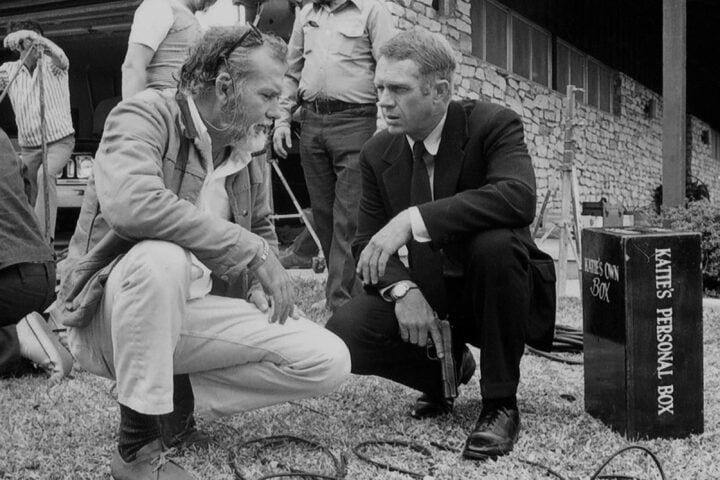The title of Richard Mirabella’s Brother & Sister Enter the Forest is evocative of the enduring promise of fairy tales: a familiar form giving shape to the darker corners of our imaginations, even as sparks of magic flash in the shadows. Such is the world of Mirabella’s meticulously woven narrative, a chronicle of the relationship between siblings Willa and Justin that elegantly cross-cuts between their adolescence and adulthoods, peeling back layers of tension to uncover the wounds at its core.
Willa and Justin’s reconnection at the start of Mirabella’s debut novel after years of estrangement challenges them to find each other once again in the forest after all those years of wandering alone. Justin’s apartment building has recently collapsed, a literal representation of the shaky and unstable foundations of his new life following a period of addiction and other struggles, and he’s arrived at Willa’s home seeking shelter and support. But Willa “didn’t know him anymore. She wanted to be happy and free of his pain.” And while both siblings would rather forget the circumstances of their fractured bond, the reunion exhumes buried traumas that Mirabella reveals with a careful hand, the dramatic revelations never eclipsing the grace of the story’s emotional core.
Before being forced to seek Willa’s help, Justin arrives home from work one day and sees that one wall of his building had collapsed and exposed its interiors to the elements, “like someone had peeled a lid off a can.” The metaphor recalls the dioramas of childhood memories—including various versions of herself and Justin when they were younger—that Willa now painstakingly creates in her apartment, miniaturizing the past to control its power over her in the present. She expresses “a desire to shrink the world and make it manageable. Why did she think she should create Justin? As if you could make something small and understand it better.”
The novel performs a similar act of reduction, distilling decades of action and inaction into indelible scenes that are heavy with meaning though deceptively light in incident. Mirabella elides the narrative’s more explosive moments—such as when teenage Justin’s older lover, Nick, assaults and kills another boy, forcing them into a harrowing getaway that Justin will barely survive—with spare language that refreshingly refuses to give them center stage. The story here is about puzzle pieces refusing to connect despite repeated efforts, which perfectly describes the fractured family unit at its center that includes both Willa and Justin along with their mother, Grace, whose lack of empathy prevents the siblings from healing and moving on.
Ultimately, this is a fairy tale of adulthood much like Hanya Yanagihara’s more expansive but similarly austere A Little Life, both of which explore how childhood trauma can come to define a person for the rest of their days—as well as how it often bleeds into our relationships with others, warping them in its image. Later in Brother & Sister Enter the Forest, after Justin has confronted his demons and begun to explore his sexuality again after years of dissociation from desire after his harrowing experience with Nick, his new lover notices that the much older Justin “often seemed younger than him. It didn’t bother Shivam, but it entered his mind. Maybe you were always the same; only your body grew and changed.” Mirabella has created a fairy tale character who’s unable to age out of the forest, and this is the tragedy at the novel’s center.
After the reunion in the novel’s opening pages, the years accrue in the white space of the page as Willa and Justin’s relationship falls apart again slowly like cracks in a windshield expanding over time until its inevitable shattering. By the end, when he’s succumbing to the effects of mental illness brought on by damage from a long-ago act of violence, Justin is left to imagine his sister into being, including the nightmarish memories brought back by her dioramas:
Somewhere his sister ate, watched someone cook, did whatever she did now. Kissed someone. Or sat alone. Painted with a tiny brush. He dreamed a small vivid dream about little trees and people, each tiny item came into focus before his eyes, and Willa made things with her hands and showed them to him. Little versions of himself he hated, resented, they sprang to life from Willa’s hands and rushed at him, some of them carrying knives, all of their eyes painted and dead.
In her seminal essay on the form, Kate Bernheimer writes that fairy tales are “the skeletons of story,” a scaffolding of possibility—a frame upon which to mount the various elements that comprise a narrative without needing to join all its muscles and ligaments so neatly. Brother & Sister Enter the Forest is like a skeleton that’s been discovered only after much of what once clung to its bones has now fallen away, and Mirabella’s muted and disarmingly sophisticated style is refreshing in a literary landscape too muddied by novels that frequently seem written only to eventually be adapted to the screen. The quiet dazzlement on display here is in how he inverts the old saying, words speaking so much more loudly than action ever could.
Richard Mirabella’s Brother & Sister Enter the Forest is now available from Catapult.
Since 2001, we've brought you uncompromising, candid takes on the world of film, music, television, video games, theater, and more. Independently owned and operated publications like Slant have been hit hard in recent years, but we’re committed to keeping our content free and accessible—meaning no paywalls or fees.
If you like what we do, please consider subscribing to our Patreon or making a donation.


